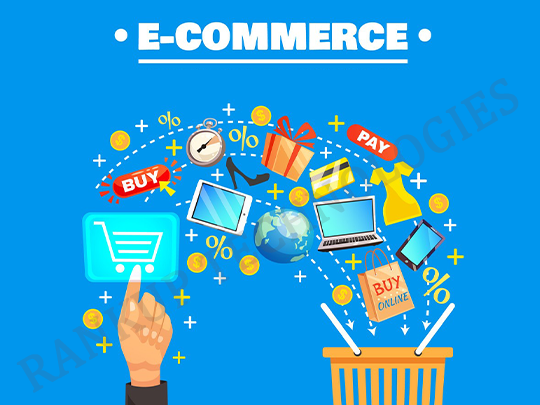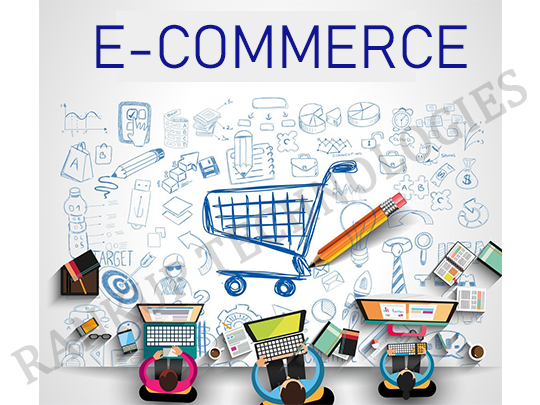E-commerce Solution
Rank Up – Ease of access comes with Scots guards applications.
At present, if the business is a body then the E-commerce solutions are bones of that body without which the body can’t stand firmly in the marketplace. Rank up Technologies is an E-commerce Website Development Company in Lucknow at the top among others in providing the customers with complete E-commerce solutions. We generate such portals for you which are extremely user-friendly and highly protected at various checkpoint levels for a successful run of secure transactions for your business.
Our endurance for our work performance makes us among the best in Lucknow, India in providing you the best technological inventions in E-commerce marketing management. We believe in providing E-Commerce Solutions to our clients who generate the trust of the users of your business product and your websites.
Our experts develop e-commerce solutions for secure visits, transactions, and navigation for the users from your website so that they can have a fantastic shopping experience at your business carts. We believe in making a strong path for your business development by building trust and making pleasant relations between you and your customers. We provide the best payment gateways which make the user feel their information to be surely protected so that they visit again and again creating more business opportunities for you. We are the one who provides you best services as we are the best digital marketing agency in Lucknow.
Types of e-commerce
Business-to-business (B2B) e-commerce alludes to the electronic trade of items, services, or information between businesses rather than between businesses and consumers. Examples include online directories and product and supply trade websites that permit businesses to search for products, services and information and to start exchanges through e-procurement interfaces.
Business-to-consumer (B2C) is the retail part of e-commerce on the web. It is when businesses sell products, services, or information straightforwardly to buyers. Today, there are many virtual stores and malls are available on the internet that is selling all types of products and services. The most popular example of these sites is Amazon, Flipkart, etc which dominates the B2C market.
Consumer-to-consumer (C2C) is a kind of e-commerce where buyers trade products, services, and information with one another online. These transactions are generally conducted through a third party that gives an online platform on which the transactions are done.
Consumer-to-business (C2B) is a kind of web-based business where customers make their products and services accessible online for companies to bid on and buy. This is something contrary to the traditional commerce model of B2C.
Business-to-administration (B2A) alludes to transactions led online between companies and public administration or government bodies. Numerous parts of government are dependent on e-services or products somehow, especially when it comes to legal documents, registers, social security, fiscals, and employment.
Consumer-to-administration (C2A) alludes to transactions led online between individual consumers and public administration or government bodies. It is very rare when the government buys products or services from citizens, but people frequently use electronic means in the following areas:
- Disseminating information, distance learning/online lectures, etc.
- Social security. Distributing information, making payments, etc.
- Taxes. filing tax returns, making payments, etc.
- Health. for appointments and giving information about the disease.
Mobile e-commerce (M-commerce) It is a type of e-commerce website on the rise that includes online sales transactions made using mobile devices, like smartphones and tablets. Mobile e-commerce includes shopping, banking, and payments via mobile.
Advantages and disadvantages of e-commerce
There are some advantage and disadvantage of an e-commerce website that you should know-
- Availability
- Speed of access
- Wide availability
- Easy accessibility
- International reach
- Lower cost
- Personalization and product recommendations
- Unlimited customer service
The apparent disadvantages of e-commerce are, sometimes limited customer service, consumers can not see or touch a product prior to purchase and they have to wait for the shipping of their product.
- Not being able to touch or see
- Wait time
- Security
- information
- Some examples of e-commerce marketplace platforms include:
- Amazon
- e-Bay
- Walmart Marketplace
- Chewy
- Wayfair
- Newegg
- Alibaba
- Etsy
- Overstock
- Rakuten
Our endurance for our work performance makes us among the best in Lucknow, India in providing you the best technological inventions in E-commerce marketing management. If you want quality work and services E-commerce Website Development Company in Lucknow, India visit us.





